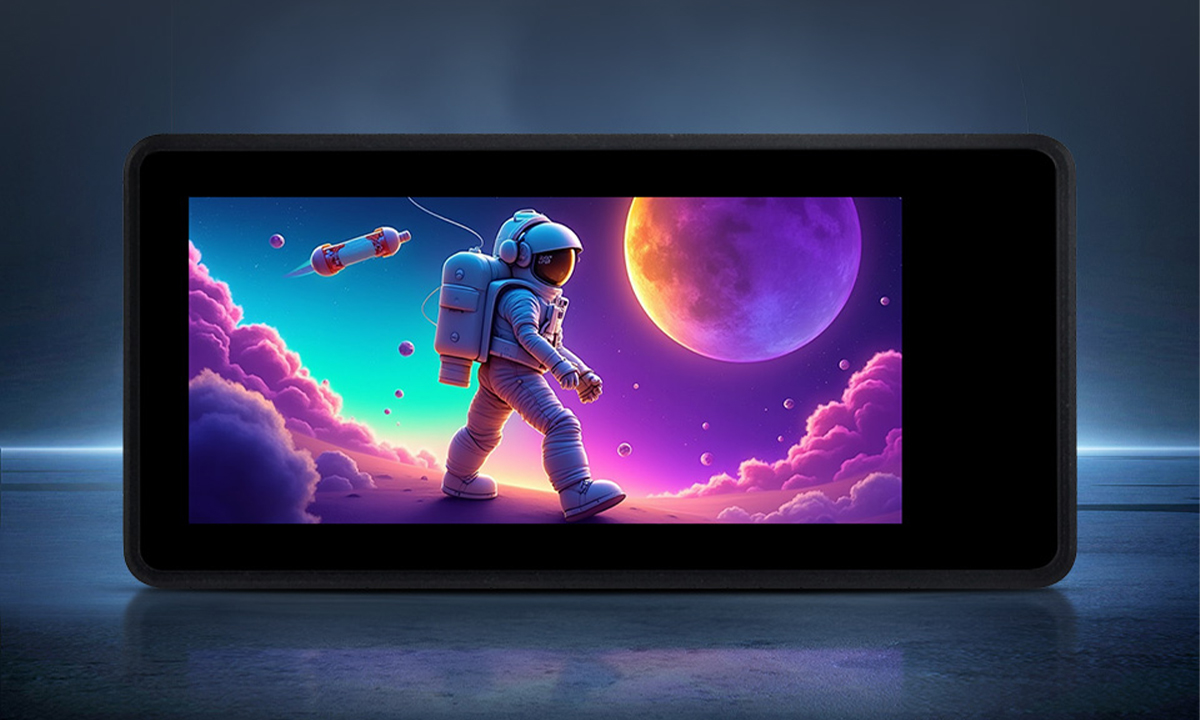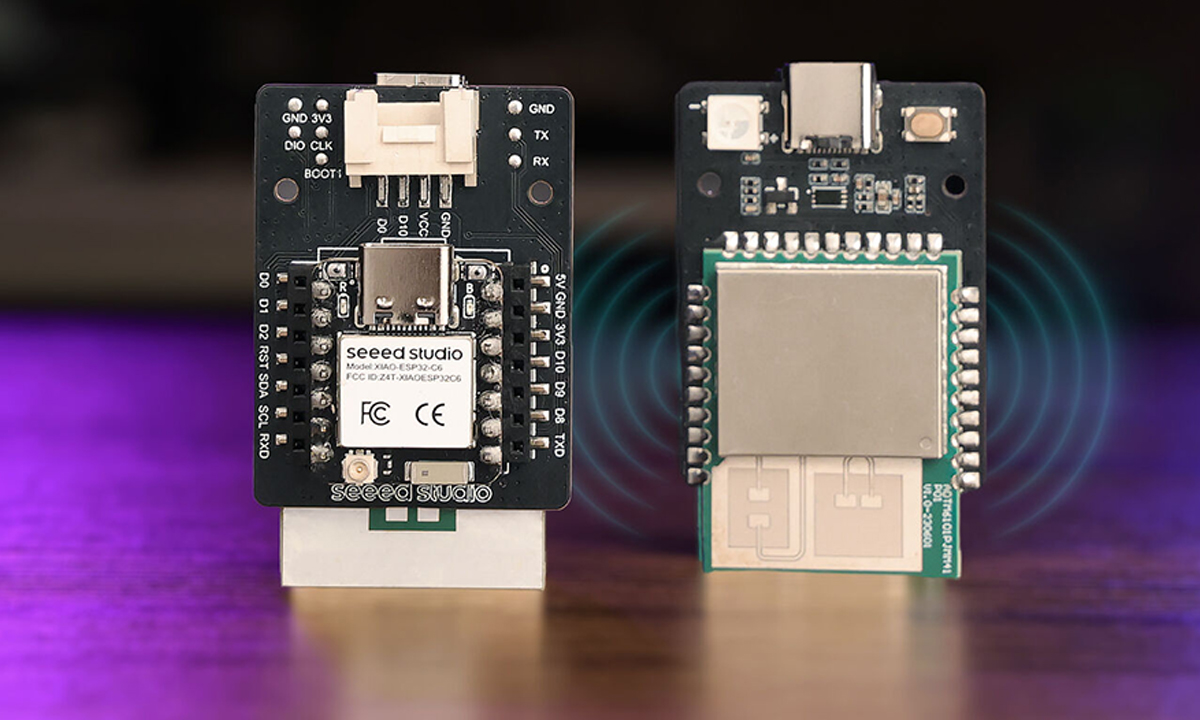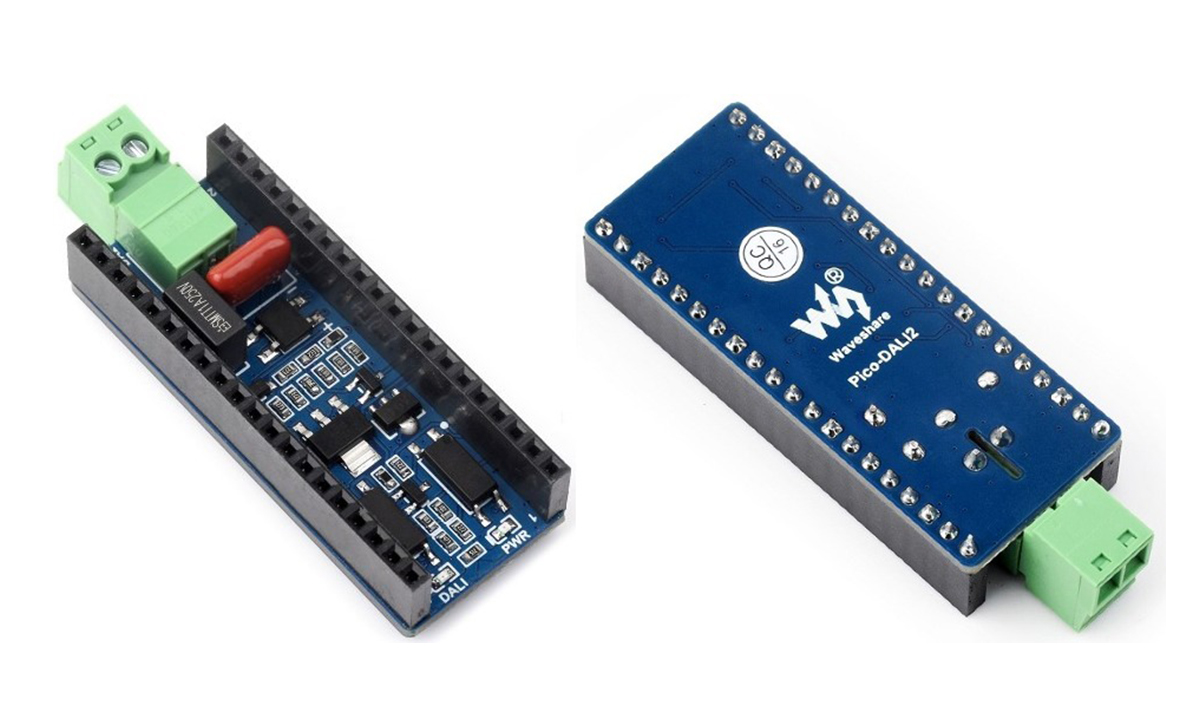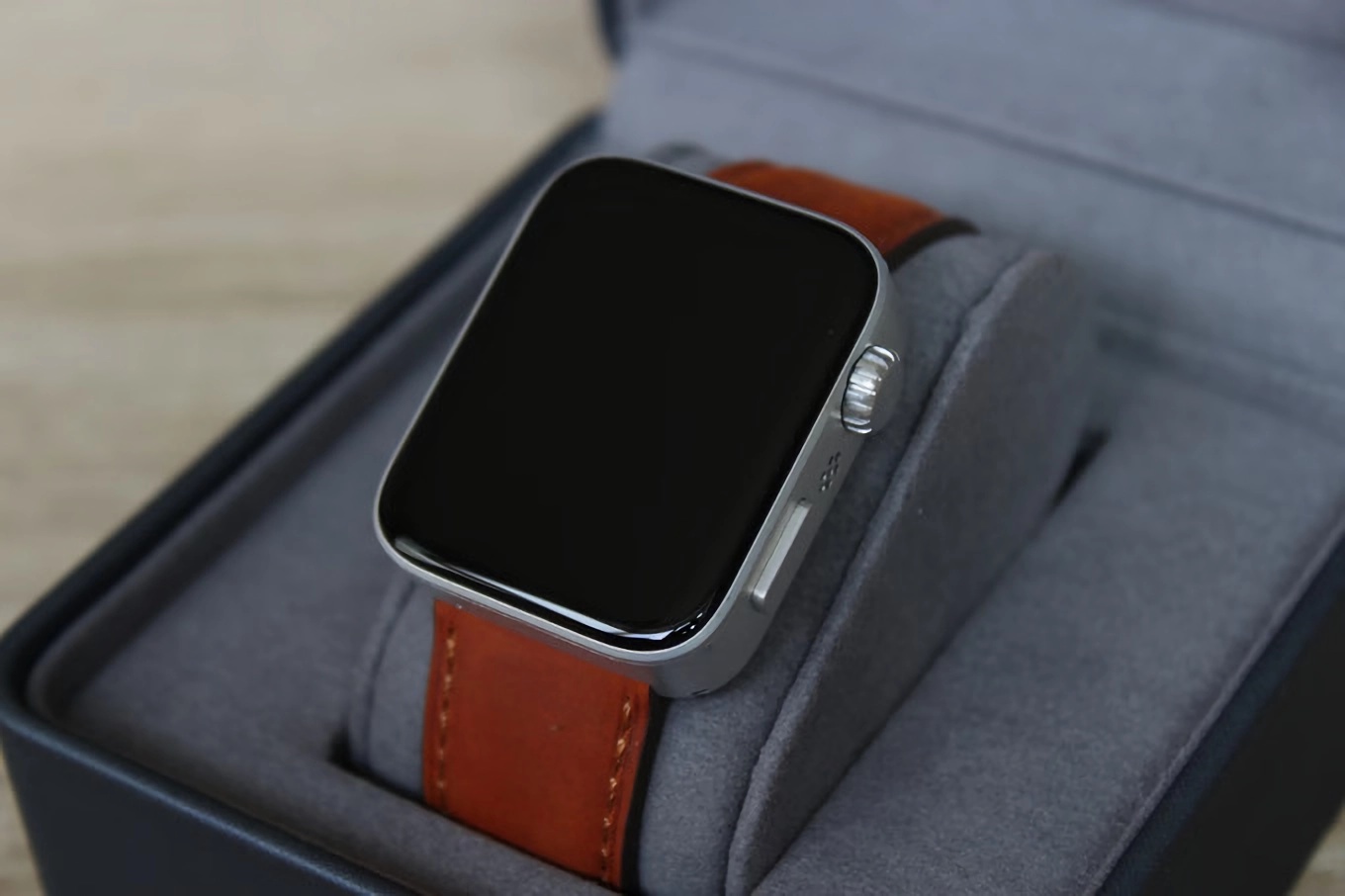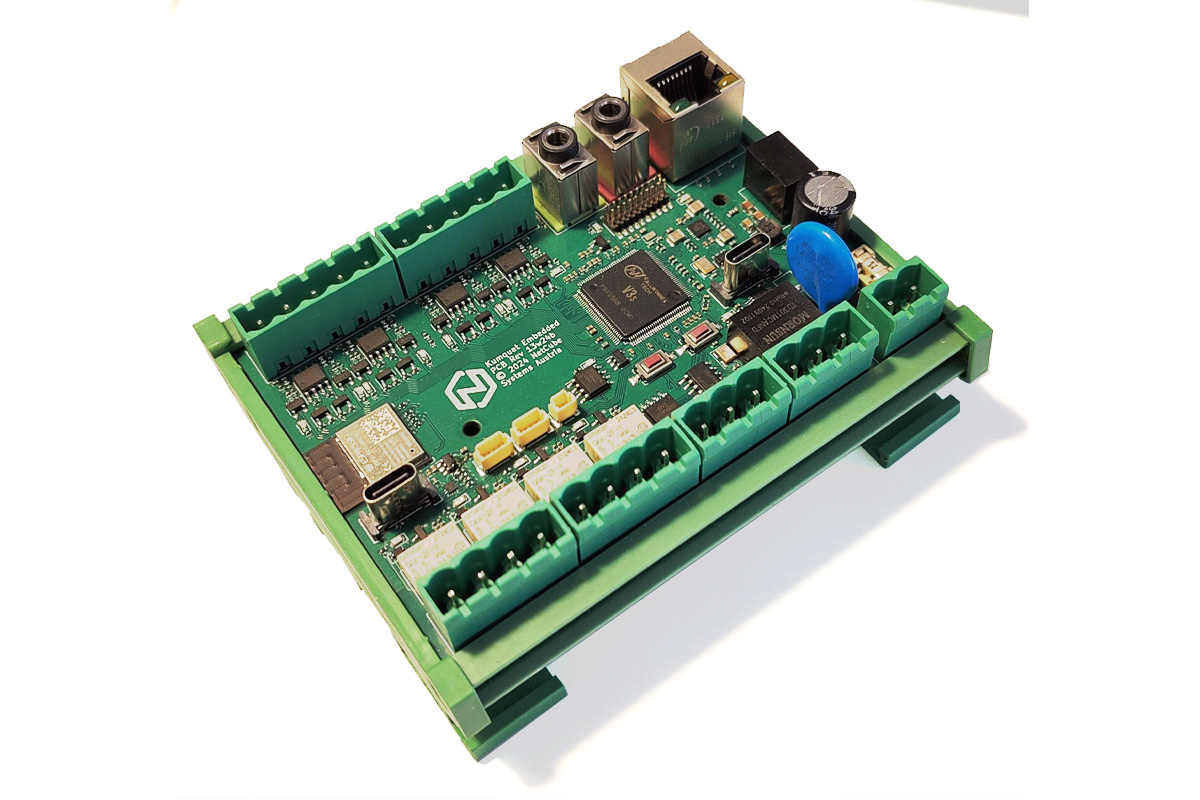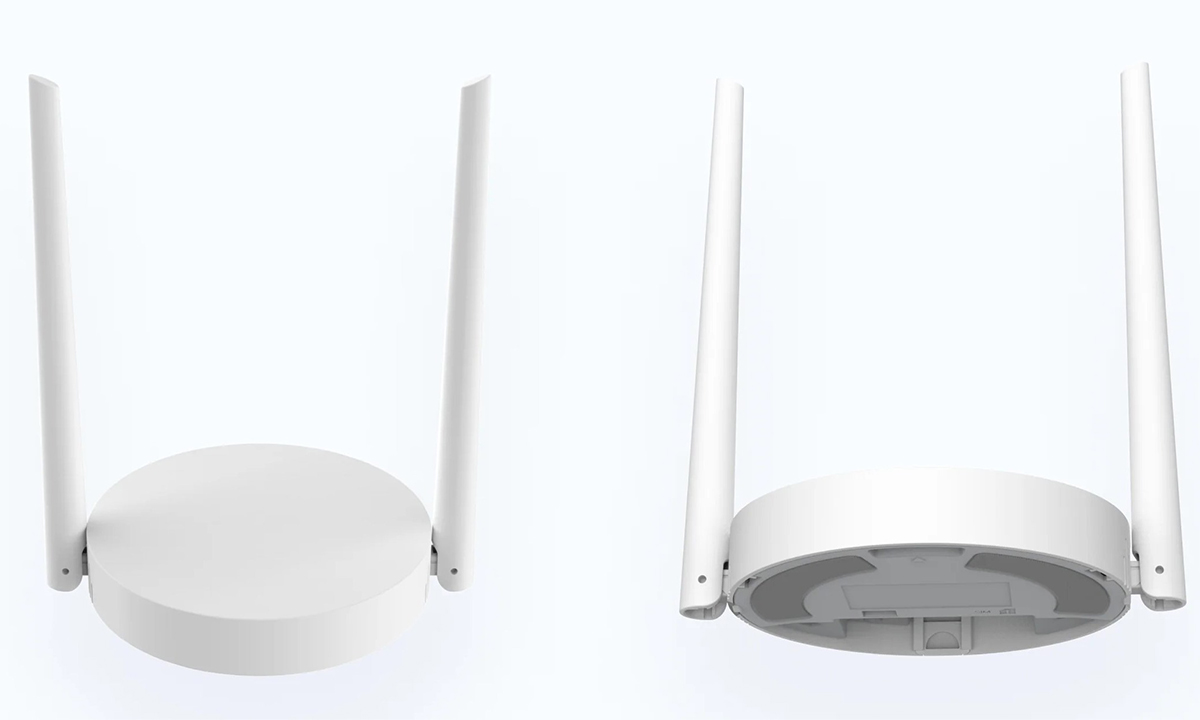Waveshare has launched an ESP32-S3 1.91-inch AMOLED development board with a 6-axis motion sensor designed for the rapid prototyping of IoT and portable projects with interactive displays. The board is built around the ESP32-S3R8 chip, featuring a 32-bit LX7 dual-core processor running at up to 240MHz, with integrated 2.4GHz Wi-Fi and Bluetooth BLE 5. It also includes 16MB Flash, 8MB PSRAM, 512KB SRAM, and 384KB ROM for efficient processing and memory management. At the core of its display capabilities is a 1.91-inch AMOLED screen with a 240×536 resolution, supporting 16.7 million colors. Powered by the RM67162 controller and connected via the QSPI interface, the display is ideal for running GUI applications like LVGL. The board is available in both touch and non-touch versions, with the touch-enabled models using the FT3168 touch IC. Other features include a QMI8658 6-axis IMU, a microSD card slot, and a Lithium battery header. The ESP32-S3 […]
Seeed Studio launches ESP32-C6-powered 60GHz mmWave human fall detection and breathing/heartbeat detection sensor kits
Last year, we reviewed the MR60FDA1 60GHz mmWave fall detection sensor kit, which utilizes the XIAO ESP32C3 module as its core. This module, featuring both Wi-Fi and Bluetooth connectivity, opens up various IoT applications. Now, Seeed Studio has introduced advanced mmWave sensor modules specifically designed for enhanced fall detection and heartbeat monitoring. The MR60FDA2 is optimized for fall detection, while the MR60BHA2 is designed for heartbeat monitoring. Powered by an ESP32-C6 WiFi 6 and RIS-Bluetotoh LE microcontroller, these modules offer reliable detection for real-time fall monitoring and accurate heartbeat tracking. They also feature customizable RGB LEDs and ambient light sensors, providing additional flexibility. With expansion options via Grove GPIO ports, these versatile modules are well-suited for applications like smart home integration and healthcare monitoring. Previously, we covered the RoomSense IQ and the DesignCore RS-6843AOPU with mmWave technology. The RoomSense IQ is an ESP32-S3-based modular room monitor with mmWave radar presence […]
DALI2 expansion module for ESP32-C6-Pico and ESP32-S3-Pico boards facilitates Smart Lighting integration
Waveshare has recently launched the Pico-DALI2 expansion module for ESP32-Pico series boards designed to enable DALI communication for customized control of multiple lighting groups. It is compatible with development boards such as the ESP32-C6-Pico and ESP32-S3-Pico and includes a DALI communication screw terminal for connecting external DALI devices. DALI (Digital Addressable Lighting Interface) is a standardized protocol used for lighting control in building automation systems. The latest version of the DALI2 protocol is better than the old one in that it offers enhanced interoperability, additional features like multi-master configurations, and better energy management capabilities. DALI2 devices can communicate bidirectionally, meaning controllers can send commands and also receive status feedback from lighting devices, allowing for more complex automation and diagnostics. We can get more information about DALI from Wikipedia. We have previously seen the uses of DALI in Texas Instruments MSPM0 Arm Cortex-M0+ microcontrollers as an interface and in Acme CM3-Home […]
Spectra is a customizable, JavaScript ESP32-S3 and nRF52832 smartwatch (Crowdfunding)
Spectra is a JavaScript-based hackable smartwatch based on the ESP32-S3 WiFi and Bluetooth microcontroller that aims to offer the quality of high-end consumer smartwatches with the repairability of a maker-targeted device. The Spectra smartwatch combines the ESP32-S3 microcontroller with a Nordic Semi nRF52832 co-processor to optimize the battery life. The ESP32-S3 is maxed out with 8MB of RAM and 32MB of external flash memory, and the microSD card slot in the watch supports up to a 512GB memory card. It shares a similar concept with the Bangle.js and the Bangle.js 2 customizable smartwatches. According to the maker, Spectra is not bound to be fully open-source, since the project uses “external proprietary code [they] aren’t allowed to share.” They plan to publish Arduino libraries and hardware design files, but there is no live GitHub repository yet. Other hackable smartwatches include the TinyWatch S3, the ZSWatch, and the Sensor Watch Pro. Spectra […]
XIAO ESP32S3 for Meshtastic & LoRa devkit features Wio-SX1262 LoRa module
The “XIAO ESP32S3 for Meshtastic & LoRa” is an ESP32-S3 LoRa dev kit that combines an XIAO ESP32S3 board with the tiny Wio-SX1262 LoRa module connected through a board-to-board connector. This compact devkit supports LoRa (862-930MHz), Wi-Fi (2.4GHz), and Bluetooth 5.0 (BLE), with a 5km range for LoRa and a 100m+ range for Wi-Fi/BLE. The kit also has a USB Type-C interface, a built-in power management chip, and multiple I/O options such as IIC, UART, and GPIO. It supports external LoRa antennas and can be extended with XIAO expansion boards for more complex setups. These features make this device suitable for projects such as LoRaWAN gateways, IoT sensors, Meshtastic nodes or routers, and applications where space is limited. XIAO ESP32S3 for Meshtastic & LoRa specifications: SoC – Espressif Systems ESP32 with dual-core Xtensa LX7 microcontroller up to 240MHz Wireless Connectivity LoRaWAN via Semtech LX1262 Output Power – Up to +22 […]
Kumquat – An Allwinner V3s embedded system board with isolated CAN, Ethernet and ESP32 for WiFi and Bluetooth
The Kumquat is an Allwinner V3s board designed for industrial automation, home automation, IoT projects, robotics, and embedded system development. The Allwinner V3s features ARM Cortex-A7 cores with 64MB DDR2 RAM and 8MB SPI flash storage. Connectivity options include Ethernet, USB-C, isolated CAN-FD, and WiFi/Bluetooth via an ESP32 module. Additionally, it has eight auto-detecting 12/24V IOs, four relays for controlling external devices, and a real-time clock with battery backup. The Kumquat runs on Buildroot Linux with a mainline kernel and can be programmed with various programming languages making it a great alternative to traditional PLCs. Kumquat board specification SoC – Allwinner V3s CPU – ARM Cortex-A7 @ up to 1.2 GHz Memory – Integrated 64MB DDR2 DRAM clocked at 400MHz @ 1.5 V Video engine Storage 8MB SPI Flash for bootloader and user code I2C EEPROM for MAC addresses and user data SDIO Connector for eMMC or SD card Connectivity […]
The Things Indoor Gateway Pro: A Managed LoRaWAN Solution with ESP32 and Semtech SX1302
The Things Industries first introduced the Things Indoor Gateway, an affordable multi-channel LoRaWAN gateway designed for IoT networks in 2019. While low-cost single-channel gateways like Dragino OLG01, priced as low as $83.50, were available, they often struggled with connectivity in shared environments. The Things Indoor Gateway, priced around $111, offered a reliable solution for large-scale IoT deployments. Building on this success, the company has now launched the next-generation Things Indoor Gateway Pro. This managed LoRaWAN gateway is designed for seamless IoT network installation, featuring zero-touch provisioning, full cloud management, and flexible connectivity options including LTE, Ethernet, and Wi-Fi with automated failover. With advanced device management tools such as mTLS, FOTA, and secure boot, the Things Indoor Gateway Pro is a future-ready solution tailored for evolving IoT needs. Previously, we explored a variety of LoRaWAN gateways, including the AgroSense LoRaWAN for high-precision agriculture, the WisGate Soho Pro RAK7267 for greenhouse monitoring, […]
ESP32-C6 WiFi 6 and Bluetooth 5.0 USB-C development board integrates 1.47-inch TFT LCD Display
Waveshare has introduced the ESP32-C6-LCD-1.47 development board powered by an ESP32-C6 RISC-V microcontroller with WiFi 6 and Bluetooth 5 connectivity and equipped with a 1.47-inch display with a 172×320 resolution. With a 4MB flash, an RGB LED, and a microSD card slot for extra storage, this board is suitable for projects that need a compact display, low power consumption, and wireless connectivity such as AIoT applications and human-machine interfaces (HMI). Earlier this month, we covered the ESP32-S3 USB dongle, another development board from Waveshare designed for HMI applications with the same 1.47-inch display with a 172×320 resolution, but a USB Type-A port instead of the USB-C port found in the model covered today. In the past, we’ve written about other ESP32-based development boards for HMI applications, including the LILYGO T-HMI, ESP32-S3-Touch-LCD-4.3B, and Waveshare’s ESP32-S3 LCD Driver Board supporting both square and round displays. Feel free to check them out if […]


